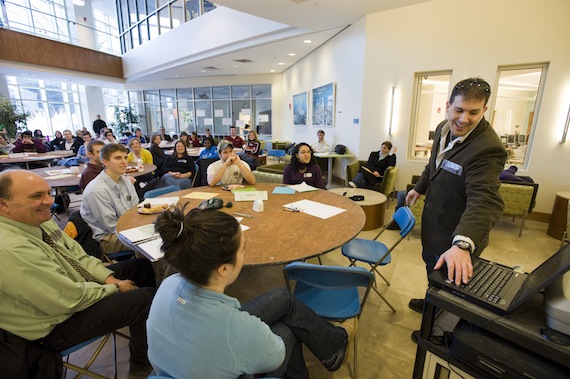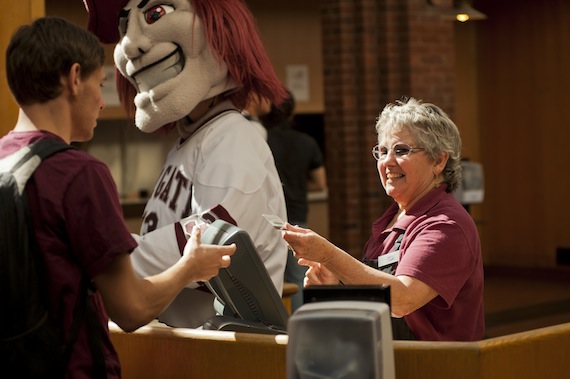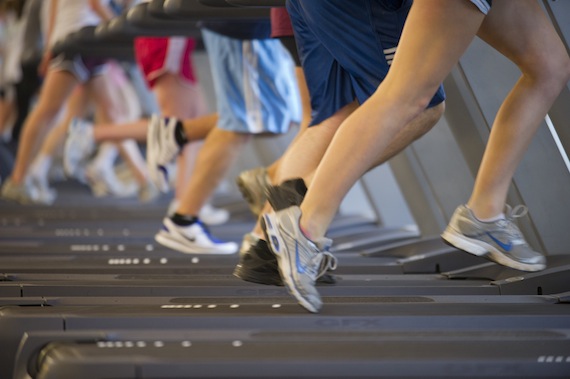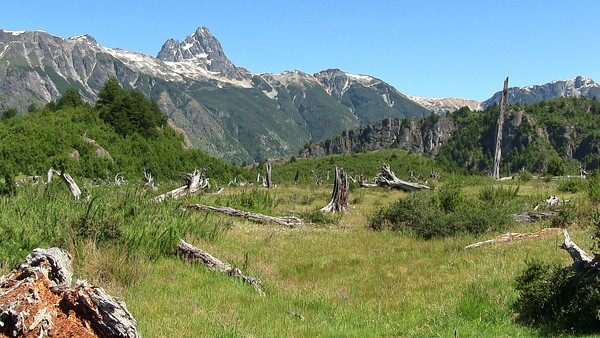Triskaidekaphobia be gone. It is the , and being the 13th of the month, itŌĆÖs time for another list the length of ░õ┤Ū▒¶▓Ą▓╣│┘▒ŌĆÖs lucky number. This month we are exploring 13 of the many ways ░─├┼┴∙║Ž▓╩ shows its continued commitment to sustainability.
1. Carbon Neutral by 2019: In January 2009, ░─├┼┴∙║Ž▓╩ became a signatory of the American College and University PresidentsŌĆÖ Climate Commitment (). Since then, ░─├┼┴∙║Ž▓╩ has reduced gross emissions by 20 percent and net emissions to 5,500 tons (one of the lowest of any institutions in the country). Along the way we received the from Second Nature.
░─├┼┴∙║Ž▓╩ carbon neutral by 2019.
2. Forest sequestration project: ░õ┤Ū▒¶▓Ą▓╣│┘▒ŌĆÖs 1,000 acres of forest in and around campus is a constant subject of scientific study for our students. The forest contains 165,491 tons of CO2 and absorbs 1,535 tons of CO2 annually. We presented our findings at the national Association for the Advancement of Sustainability in Higher Education () conference in October 2013.
3. Biomass heating: ░õ┤Ū▒¶▓Ą▓╣│┘▒ŌĆÖs meets 75 percent of campus heat and hot water needs. Installed in the early 1980s, the boiler processes approximately 20,000 tons of locally and sustainably harvested wood chips per year. Last year the boiler saved ░─├┼┴∙║Ž▓╩ 1.2 million gallons of fuel oil, 13,800 tons of emissions, and $1.8 million in heating costs.
Wood chips cascade into the ŌĆ£hopper,ŌĆØ the trough that feeds the firebox.
4. Willow field: In 2009, ░─├┼┴∙║Ž▓╩ planted 60,000 8-inch willow shoots a mile from campus to grow our own energy. This plot will yield about 900 dry tons of biomass during a 20-year period for use in ░õ┤Ū▒¶▓Ą▓╣│┘▒ŌĆÖs wood-fired boiler. This is a carbon neutral operation. Read our willow field blog for more info:.
Willow trees to be used as sustainable fuel.
5. Green Raiders and office programs: student interns work to inspire sustainable behavior by students while the promotes individual and workplace sustainable behavior on campus. Both programs create awareness and practice sustainability through awards, online resources, and how-to-guides.

6. Patagonia Sur: In 2012 we planted the ░─├┼┴∙║Ž▓╩ Forest, located in the in the Palena province of southern Chile, which consists of 225,000 native trees on 428 acres of land. This innovative agreement results in the purchase of 5,000 tons of forestry-based carbon offsets per year for 15 years. Importantly, the agreement creates academic opportunities for students and faculty to conduct research within the ░─├┼┴∙║Ž▓╩ Forest and The Patagonia Sur Nature Reserve in general.
7. Green Bikes: The mission of this program is to provide ░─├┼┴∙║Ž▓╩ students with . New bikes are purchased each year as the program continues to expand. As of 2013, we have 25 bikes in our fleet.
Chelsea Hoffman ŌĆÖ11, unlocks one of the Green Bicycles outside of the Case Geyer Library.
8. Community garden: Made possible by a gift from the Class of 2010, ░õ┤Ū▒¶▓Ą▓╣│┘▒ŌĆÖs 0.5-acre is maintained by the student group Green Thumbs, and student interns employed through the Sustainability Office. Food from the garden can be found in Frank Dining Hall or at the farm stand in the Coop during fall harvest.
The ░─├┼┴∙║Ž▓╩ Community Garden.
9. Green Summit: The is ░õ┤Ū▒¶▓Ą▓╣│┘▒ŌĆÖs longest running annual environmental symposium where students, faculty, staff, and community members come together to brainstorm and implement sustainability projects on campus.

John Pumillio presents at the Green Summit.
10. E-Waste recycling stations: ░─├┼┴∙║Ž▓╩ recycles including computers, monitors, televisions, and printers through Regional Computer Recycling and Recovery, of Rochester, NY. There are 15 stations around campus recycling cell phones, iPods, cables/cords, printer cartridges, batteries, cameras, calculators, etc.
E-waste sculpture by Leslie Strobel ŌĆÖ10 and Jesse Chang ŌĆÖ12.
11. Tray-less dining and composting: We compost about 300 pounds of food scraps from Frank Dining Hall at a campus composting facility. This saves garbage pick-up fees, further reducing our carbon and ecological footprints. in Frank has reduced food waste by about 30 percent while reducing the need for water to wash the trays.

Jean welcomes students to Frank Dining Hall with her ever-present smile.
12. Sustainable building practices: ░õ┤Ū▒¶▓Ą▓╣│┘▒ŌĆÖs newest building, the by the United States Green Building Council, and recent are on track to receive Silver LEED status.

Trudy Fitness Center achieved LEED Gold Standard.
13. Solar thermal energy: Students living in 100 Broad Street are now using renewable solar energy instead of fossil fuel for their domestic hot water use. The solar thermal array will eliminate the use of nearly 900 gallons of fuel oil while reducing heating costs. The 600 square feet of solar panels will reduce ░õ┤Ū▒¶▓Ą▓╣│┘▒ŌĆÖs carbon footprint by more than nine tons, inching the university ever closer to its goal of carbon neutrality by 2019.
Solar heating at 100 Broad.

